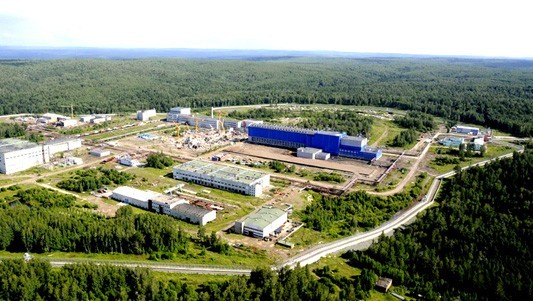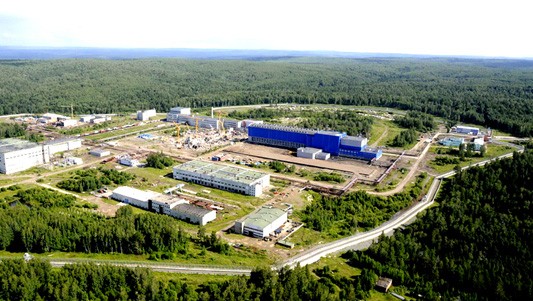The January 2019 opening of the Krasnoyarsk Mining and Chemical Combine uranium reprocessing plant in Zheleznogorsk, Russia, provides an expanded reprocessing capability to recycle spent uranium fuel from power plants. Penetron and Penecrete Mortar topical materials were specified for the plant’s new and renovated concrete structures.
Located in Zheleznogorsk (in Southern Siberia), the Krasnoyarsk Mining and Chemical Combine is part of the Rosatom Group, a Russian state company and global leader in nuclear energy. Originally, the Krasnoyarsk plant played a significant role in the early Soviet Union nuclear weapons production programs. More recently, the site has evolved into an interim storage facility and a commercial mixed oxide (MOX) fuel fabrication facility, where spent nuclear fuel is reprocessed as fuel for thermal type nuclear reactors. Done routinely in Europe, Russia and Japan, reprocessing of uranium and plutonium is limited to scientific research projects in the USA.
Nuclear reprocessing chemically separates and recovers fissionable uranium from spent nuclear fuel, which can be used as fuel for breeder type nuclear reactors. The Krasnoyarsk Mining and Chemical Combine’s new pilot reprocessing plant in Zheleznogorsk uses the latest UREX technology to reprocess uranium, which makes up the vast majority of the mass and volume of spent nuclear fuel from modern nuclear power plants.
Looking for the Most Reliable Building Materials
“Incredibly, the UREX process reduces the final amount of solid waste from spent nuclear fuel by approximately 100x,” adds Matveeva Ekaterina Nikolaevna, Director of PENETRON-K, the Penetron representative in the Krasnoyarsk Krai in Siberian Russia. “This virtually eliminates all the hazardous plutonium and liquid wastes found in spent nuclear fuel rods.”
The most reliable building materials were needed for the construction of the nuclear processing and storage facility. Extensive testing was done to determine the most robust waterproofing solution, where candidate materials had to meet a set of performance parameters and technical characteristics. Finally, Penetron products (Penetron topical material and Penecrete Mortar) were specified to best ensure a long service life for the site’s reinforced concrete structures and protect them from the damaging effects of groundwater and radiation. Penetron crystalline products also provide self-healing of microcracks, a crucial aspect of any durable concrete structure.
Successful Solution for Nukes Around the World
Specifically, Penetron materials were used in the reconstruction of the “wet storage” facility for irradiated nuclear fuel (where the spent fuel is stored underwater for 10-20 years before being reprocessed) from the VVER-1000 reactors at the Krasnoyarsk plant and in the construction of the “dry storage” facility of spent nuclear fuel (after cooling in wet storage pools, the fuel is sealed in steel cylinders and surrounded by inert gas).
In concrete, nuclear radiation leads to the break of atomic bonds, which could explain the decay in the mechanical properties observed in exposed concrete. There is also evidence of losses between 25-60% in the compressive strength of concrete.
“This is not the first time Penetron products have been used for the construction or repair of a facility exposed to radioactive materials,” adds Matveeva Ekaterina Nikolaevna. “Penetron technology has been used successfully in numerous nuclear atomic power facilities in many countries.”

Reducing solid waste: The Zheleznogorsk facility reprocesses uranium and plutonium for use as fuel in thermal nuclear reactors. The Penetron System protects concrete from groundwater and radiation.




